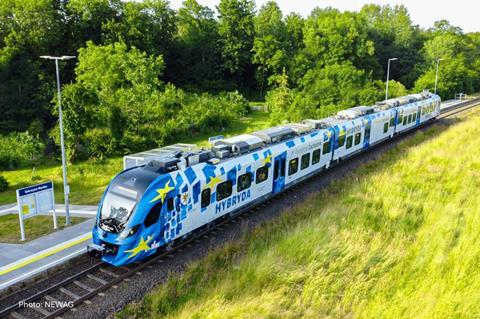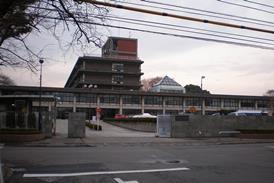Medcom is a Polish designer and manufacturer of power electronics for public transportation vehicles. For over 30 years, the company has been supplying car-builders with auxiliary converters, traction inverters, battery chargers and other power systems for: EMUs, locomotives, passenger coaches as well as urban vehicles: trams, metro cars, trolleybuses and electric buses.
As InnoTrans 2024 approaches, we are interviewing Paweł Choduń – Vice President of Medcom, about Silicon Carbide (SiC) technology that moves green transformation forward.

When did you start introducing silicon carbide into your products?
We started our research and development the moment the first commercial samples of SiC transistors were available. The first prototype converters were tested back in 2014-2015. Since then, we have quickly moved forward to the serial production phase. Our first batch of serial products – tram auxiliary converters, has been in operation since 2018.
Are SiC converters so different than traditional silicon solutions?
The paramount goal of introducing SiC is energy saving. To achieve this, a power converter needs to be fully redesigned to work with the new technology. SiC transistor modules are faster than IGBT modules and they require new drivers and control algorithms. Likewise, magnetic components and many other elements need to be changed, to operate with extremely high-frequencies. All these design changes are crucial to fully benefit from SiC technology.
Can you list the most significant advantages of using SiC in power electronics?
The most significant one is, of course, higher energy efficiency. In case of traction inverters we have been able to reach efficiency exceeding 99%. This means, that power losses in the converter are several times lower than in the traditional designs. Efficient energy conversion results in lower power losses of the converter, therefore we can reduce the size of the cooling system, and, in many cases, remove the cooling fans. These modifications increase the reliability of the equipment and reduce life cycle costs.
The reduction in size and weight is also possible due to the fact that the high-frequency magnetic components are also smaller than those operating in lower frequency range. Additionally, SiC converters emit lower acoustic noise. Firstly, thanks to the reduced fan system, and secondly, thanks to high operating frequencies – above the range of human hearing.

Is this technology mature enough to be implemented in mass production?
SiC transistor modules themselves are mature products. We need to remember that the leading semiconductor manufacturers started the commercial production back in 2010-2011. Since then, the technology has only been improving.
As Medcom was one of the pioneers in introducing this technology to power electronics, we have extensive experience in a variety of applications. We have delivered several thousand SiC converters and we strongly believe that this technology is the most important step towards increasing the energy efficiency of public transport. To date, we have installed almost 25 000 SiC power modules in our power electronics and the reliability of those devices is even higher than of the IGBT converters.
In the first half of 2024, already 50% of our sales came from SiC devices and we plan to increase this share to 70%-80% within the next few years.
Which segment of the railway market can benefit the most from SiC?
Higher efficiency of energy conversion can create greatest benefits in the urban mobility segment: EMUs, trams, metro and electric buses. In these applications, SiC traction inverters should be the first choice product. Urban vehicles operate in continuous acceleration and braking cycles, therefore the energy is constantly converted between the traction motors and the catenary or the batteries. The second place application for SiC technology are auxiliary converters. In this case, we see energy savings in all types of vehicles. In most cases, during a regular operating day, auxiliary converters work longer than the vehicle itself, as they supply the energy for HVAC systems before commercial service commences. In case of such extensive use, every percentage of reduction in energy consumption means significant cost savings.

Do you believe that silicon carbide will replace silicon in power electronics?
The benefits for car builders and operators are obvious and measurable. Every client can make an in-depth assessment of life-cycle costs, and if the power converter is well-designed, it will always prove to be better. Energy savings resulting from the use of SiC, are one of the key elements of green transformation, especially in times of rising energy costs.
Our SiC converters operate in all types of public transportation vehicles: electric buses, trams, light rail vehicles, metro trains, passenger coaches, EMUs and locomotives. In every case, the technology provides higher energy efficiency and gives more flexibility to the car builders as the converters are smaller, lighter and require less cooling. That is why we can say that SiC converters are no longer a special option for our clients, these are “Our baSiC”.

Get more information! Meet us at InnoTrans 2024 (hall 17, stand 255)

















